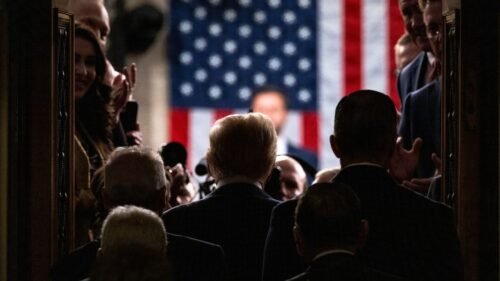The Bureau of Labor Statistics’ (BLS) monthly employment reports are among the most closely watched economic data releases in the United States, offering crucial insight into the nation’s economic health. The July 2025 report, however, made headlines for reasons well beyond the numbers: historic revisions to previous data, public accusations from President Donald Trump and the unprecedented firing of the BLS commissioner, Erika McEntarfer.
US job creation disappoints
The BLS reported lower-than-expected job creation in July, with substantial downward revisions to May and June. Days later, Trump fired McEntarfer, accusing her of rigging the data. Was the agency’s data flawed? Or was Trump simply shooting the messenger?
According to the July 2025 payroll survey, the economy added a mere 73,000 jobs, below expectations of 115,000. Meanwhile, revisions slashed May’s gain from 125,000 to 19,000, and June’s from 147,000 to 14,000 — a cumulative downgrade of 258,000 jobs.
The BLS compiles jobs data by surveying roughly 120,000 business establishments each month, gathering payroll, hours worked and wages. Initial estimates (the so-called “advance” and “preliminary” numbers) come from incomplete data and projection models. These are later revised as more responses trickle in.
Once a year, BLS conducts a benchmark revision, replacing survey estimates with unemployment insurance (UI) administrative records, which capture actual payroll tax-reporting by firms — far more complete and accurate. Differences between survey-based estimates and UI data lead to systematic adjustments in the fourth quarter release each year, recalibrating the entire prior year.
Unfortunately, the survey response rate has fallen — only 58% responded in July, down from a historical 72%. Additionally, BLS is facing budget cuts and reduced staffing, as reported by the Financial Times.
Statistical significance
In a technical note, BLS points out that employment changes between a decline of 86,000 and an increase of 186,000 are not statistically significant if the actual gain was 50,000, as numbers within the range were still part of a 90% confidence interval. The 73,000 increase in July was therefore statistically not significant, as zero job growth would have been part of the actual count.
Think of it this way: if you managed a movie theater with 163 attendees, would you fret over a difference of one or two-tenths of a person? This is what the employment revision corresponds to in an economy with 163 million employees.
According to the BLS, only one out of 16 sectors (private education and health services) saw a statistically significant employment change different from zero for the one and three-month intervals.
Revisions to employment numbers happen regularly, and recent revisions do not suggest any foul play. President Trump made repeated claims that the employment numbers were “rigged” to make him look bad, but experts debunked these assertions. The former head of BLS, Bill Beach, rejected Trump’s claims.
Damaging trust in statistics
Unfortunately, Trump’s firing of McEntarfer, an experienced economist, will have negative consequences. Can financial markets still trust future employment releases? Will future BLS leaders resist the urge to please the President by twisting numbers or adjusting survey design in favorable ways?
US government statistics may be reaching a point where they cannot be trusted — ironically, the same issue the US once criticized in Chinese statistics.
[Kaitlyn Diana edited this piece.]
The views expressed in this article are the author’s own and do not necessarily reflect Fair Observer’s editorial policy.
Support Fair Observer
We rely on your support for our independence, diversity and quality.
For more than 10 years, Fair Observer has been free, fair and independent. No billionaire owns us, no advertisers control us. We are a reader-supported nonprofit. Unlike many other publications, we keep our content free for readers regardless of where they live or whether they can afford to pay. We have no paywalls and no ads.
In the post-truth era of fake news, echo chambers and filter bubbles, we publish a plurality of perspectives from around the world. Anyone can publish with us, but everyone goes through a rigorous editorial process. So, you get fact-checked, well-reasoned content instead of noise.
We publish 3,000+ voices from 90+ countries. We also conduct education and training programs
on subjects ranging from digital media and journalism to writing and critical thinking. This
doesn’t come cheap. Servers, editors, trainers and web developers cost
money.
Please consider supporting us on a regular basis as a recurring donor or a
sustaining member.
Will you support FO’s journalism?
We rely on your support for our independence, diversity and quality.








Comment